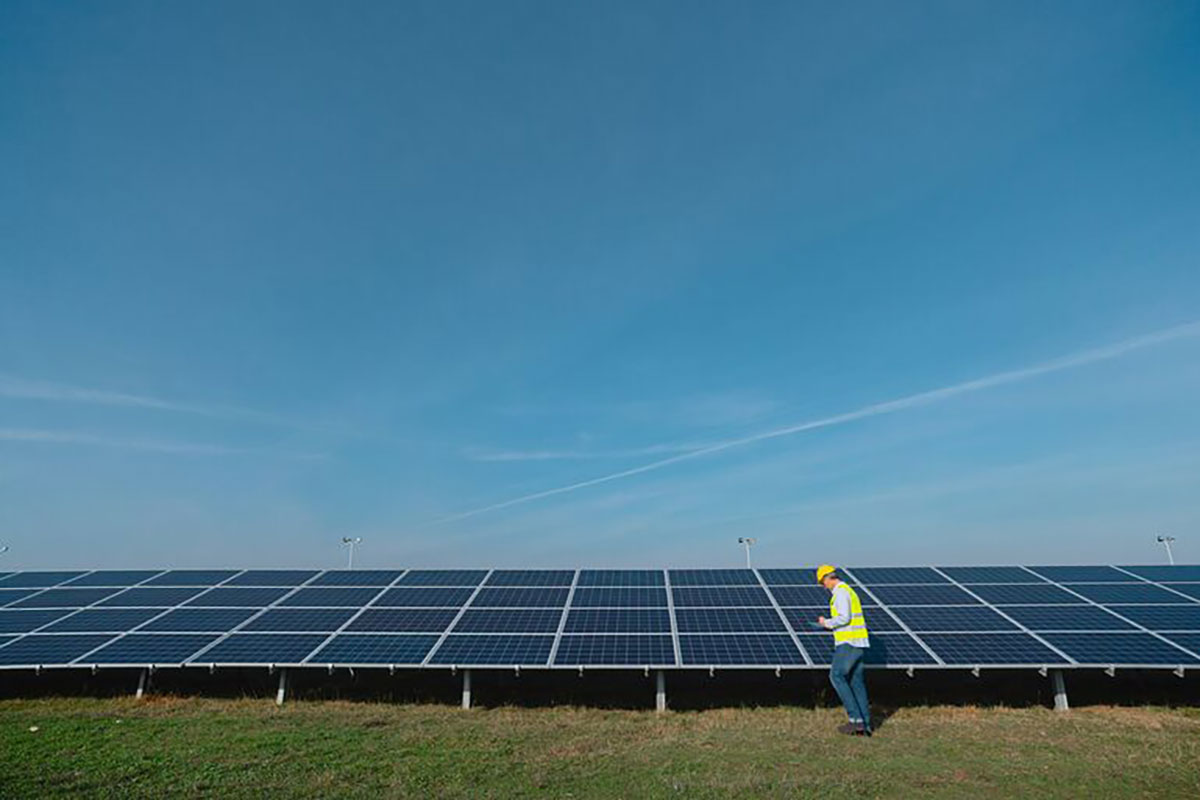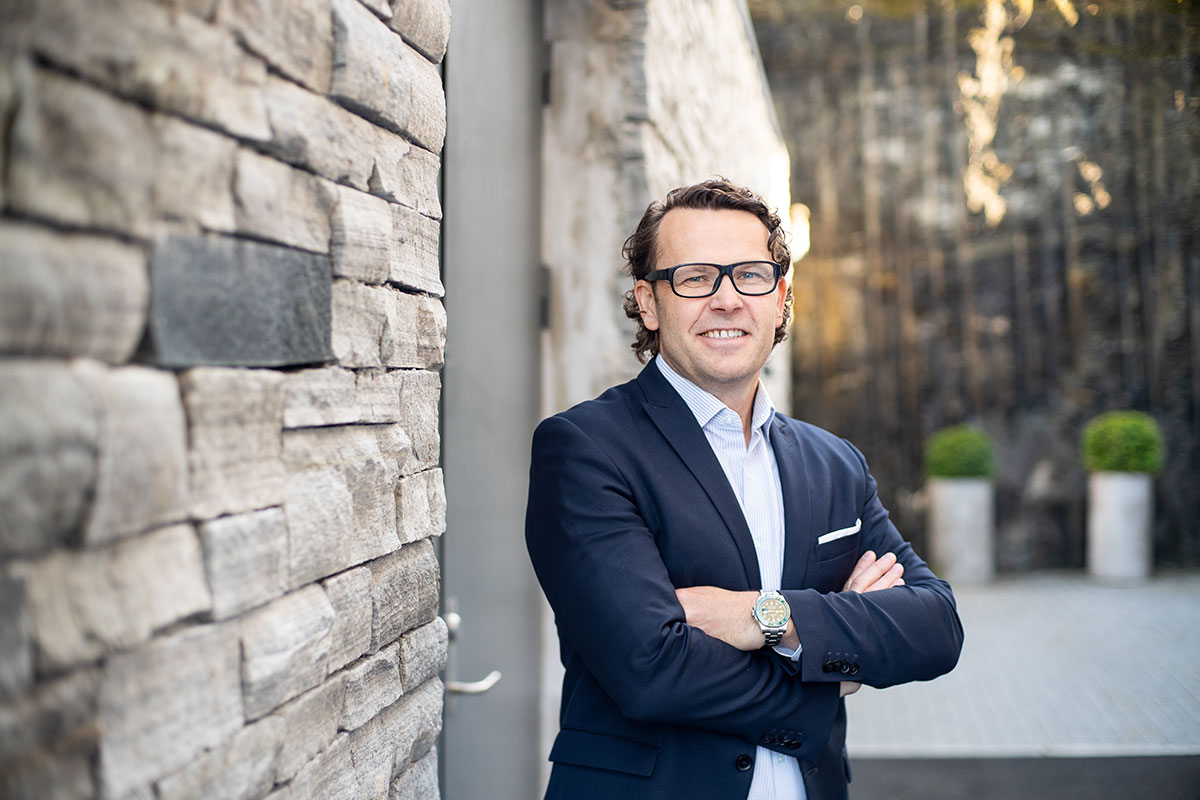Cutting emissions - and inviting our suppliers to join us

As part of our commitment to reduce our carbon emissions, we have a responsibility to also examine our value chains. At Telenor, we are now reaching out to our suppliers – to require that they too adopt science-based targets for their activities.
Spearheading that effort is Telenor Procurement Company (TPC), that handles all procurement for Telenor companies globally, and we spoke to CEO Thomas Skjelbred about how we will be playing our hand in this game.
Telenor is currently doing several things to reduce the emissions related to our business. Which of these has the largest potential impact?
Thomas: We have two overarching priorities. We take responsibility for our so-called scope 1&2 emissions that we to a large extent control ourselves. Scope 1 emissions are direct emissions from owned or controlled sources, and scope 2 emissions are indirect emissions from the generation of purchased energy. For us, the main thrust is sourcing renewable electricity. At Telenor, our preferred way of doing that is entering into Power Purchase Agreements, which we hope will incentivize development of new solar and wind farms. However, our biggest carbon footprint is in emissions from our supply chains i.e., emissions generated by the production of all the stuff and services that we buy. These are called Scope 3 emissions. So, the biggest impact we can make is to reduce our Scope 3 emissions. But we cannot just ask our suppliers to “fix our problem” without demonstrating that we are taking meaningful steps to address our own emissions first.
And how do we prove to the world that we’re actually delivering those emission cuts?
Thomas: By setting science-based targets. Targets are considered ‘science-based’ if they are in line with what the latest climate science deems necessary to meet the goals of the Paris Agreement – which means limiting global warming to well below 2°C above pre-industrial levels – and pursuing efforts to keep the threshold at 1.5°C. To achieve this, a company’s greenhouse gas emissions must typically be halved between 2020 and 2030, and then drop to net zero by 2050. The Science Based Targets initiative, SBTi, is an organization that validates that a company has set credible climate emission targets that are compliant with the 1.5C ambition. They define and promote best practice in emissions reductions and net-zero targets.
As a large procurer of goods and services we have significant leverage. Is this about us throwing our weight around and scaring the living daylights out of our suppliers?
Thomas: This is not about scaring anyone at all. It is about acknowledging that Telenor is an attractive customer, and that we have an opportunity to influence our suppliers to do their part in saving the world form global warming. If some suppliers get scared, it’s probably because they are not taking their role seriously yet – and that is OK. But 80% of all emissions and 90% of Telenor’s scope 3 emissions come from our supply chain and the goods and services that we buy. Connectivity will be a backbone in the digital society, and if the people who buy our services want to be carbon free, then we must be carbon free, and our supply chain must be carbon free. That is why we have our scope 3 target and why we rely on our suppliers to join the effort. We have two ways to achieve this – we can influence current suppliers to set and pursue SBTs, and/or shift more of the company spend to suppliers that already have and pursue SBTs.
TPC/Global Procurement has so far been concerned with ensuring that Telenor retains its edge in procurement, and that we get “competitive rates” on everything we need. How are you adapting to this new remit?
Thomas: Clearly, we may experience situations where requirements to select a climate-friendly supplier could reduce the number of qualified suppliers and therefore competition. But we have made sure that we have ways to deal with exceptional cases where there may be unacceptable negative consequences e.g., financially. This is the same approach that we use when limiting suppliers based on their compliance with our ABC requirements. We have spent more than a year informing suppliers and their top management about where we are headed and what we will expect from them, giving them plenty of time to adapt. And we are not alone. Our work involves a structured way of interacting with suppliers in a cross-functional way across the group with sustainability teams, local and global procurement teams all making efforts in the same direction and educating and supporting suppliers.
How are we approaching our suppliers with this message – and will the follow-up be mostly about carrot or stick?
Thomas: Both. We have made SBT compliance mandatory for suppliers with a specific spend threshold and we will increasingly prioritize SBT compliant suppliers. In the coming years the aim is to shift the spend to SBT compliant suppliers, and hopefully this will inspire more suppliers to sign up. Those that don’t will be at a disadvantage. Our door will remain open to all suppliers that make the effort to limit global warming and we will be there to guide them.

What if a critically important supplier says “nah, we’re not going to go along with this”?
Thomas: We have interacted with suppliers for over a year now and so far, no one is outrightly saying this. However, if we are not making any traction with a supplier, we will inevitably shift our spend to a supplier that has set targets and sees eye to eye with Telenor. It should also be noted that any exceptions will need to be approved by Telenor’s top management.
Some geographies could perhaps be expected to be quicker to respond than others – where do you see the biggest barriers ahead?
Thomas: You are right. This is also the reason why our scope 1&2 target for the Nordics is higher than the one in Asia – 95% vs 50% reduction. This will also be the case for scope 3 for suppliers. We see that suppliers based in Europe/EU are leading the shift, followed by North America, while our supplier base in Asia is generally about two years behind. In many countries in Asia, national legislation may not be as demanding and the maturity level not the same as in Europe. However, many Asian suppliers understand the bigger picture and are making commitments. Our work in Asia is not impossible but certainly more difficult.
A principle which is equally relevant to the Nordics and Asia, is that each Business Unit/OpCo should strive to remain on a linear trajectory to its underlying local SBT emission reduction path. Delaying climate action until the final years of the target implementation duration would go against that principle. Emission reductions need to be continuous and gradual along a linear pathway.
Telenor has set some hefty targets in this Scope 3 effort – are you worried that this is a bridge too far?
Thomas: No, we need this to be on top of our agenda, both as private individuals and as a business. Doing our share to limit global warming is inspiring, and a key priority for Global Procurement and Telenor as a whole. If we can look ourselves in the mirror and say that we did our best to meet the targets, we will be satisfied. We are contributing to a very tough ambition: to limit global warming to 1.5C, and we depend on our surroundings, including governments, suppliers, and customers, to do their part. So far, with collaboration and management support across TPC, Global Procurement, Group and BAs, we are on the right track, the entire group shares the same commitment and drive to see the value beyond savings. The mandatory SBT requirement that we just introduced demonstrates this and is a big step in the right direction even if it could involve some heartache along the way.
On a personal note – is this a necessary move to adapt to a changing business environment – or more like “the right thing to do”?
Thomas: Well, given the dramatic consequences of global warming, it is undoubtedly the right thing to do. No one lives in a vacuum, and we will all be affected. But I also think it is unavoidable if we want to remain an attractive partner to our own customers.
Read more about Supplier requirements
Reaching the climate targets
Telenor has actively worked to reduce the company’s carbon emissions in line with our Near-Term science-based targets towards 2030 for over two years now.
As a natural next step Telenor have now committed to set a Long-Term net-zero target in line with SBTi’s standard.
A net-zero target will require a reduction in emissions across all three scopes 1,2 and 3 combined by at least 90%
Since Scope 3 represents the dominant share of Telenor’s carbon footprint, these emissions have a high priority (in 2022 scope 3 emissions represented 77% of all global emissions, in Nordic it was 99%)
As a company that provides critical infrastructure for digitalization of society and business, Telenor will need to provide low emission and ultimately net-zero emission services for others in their pursuit of net-zero emissions.